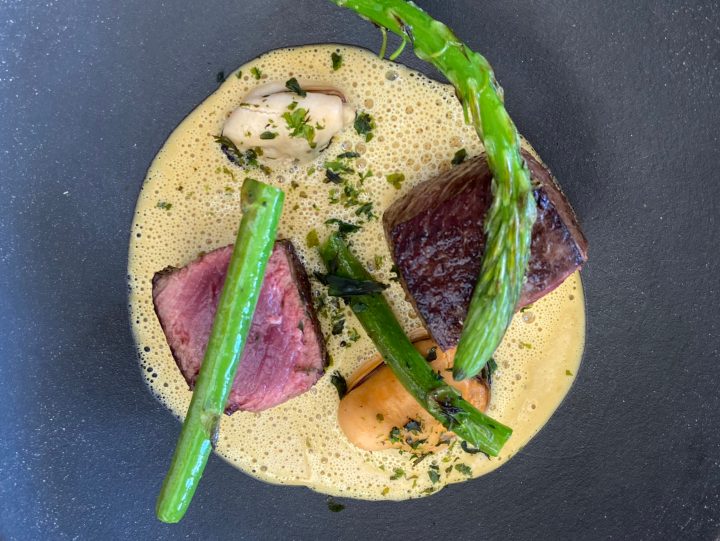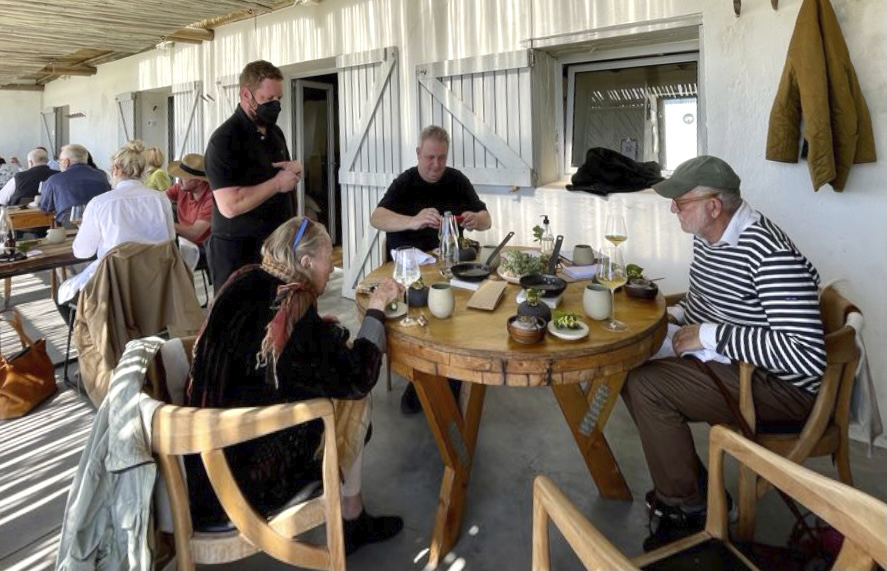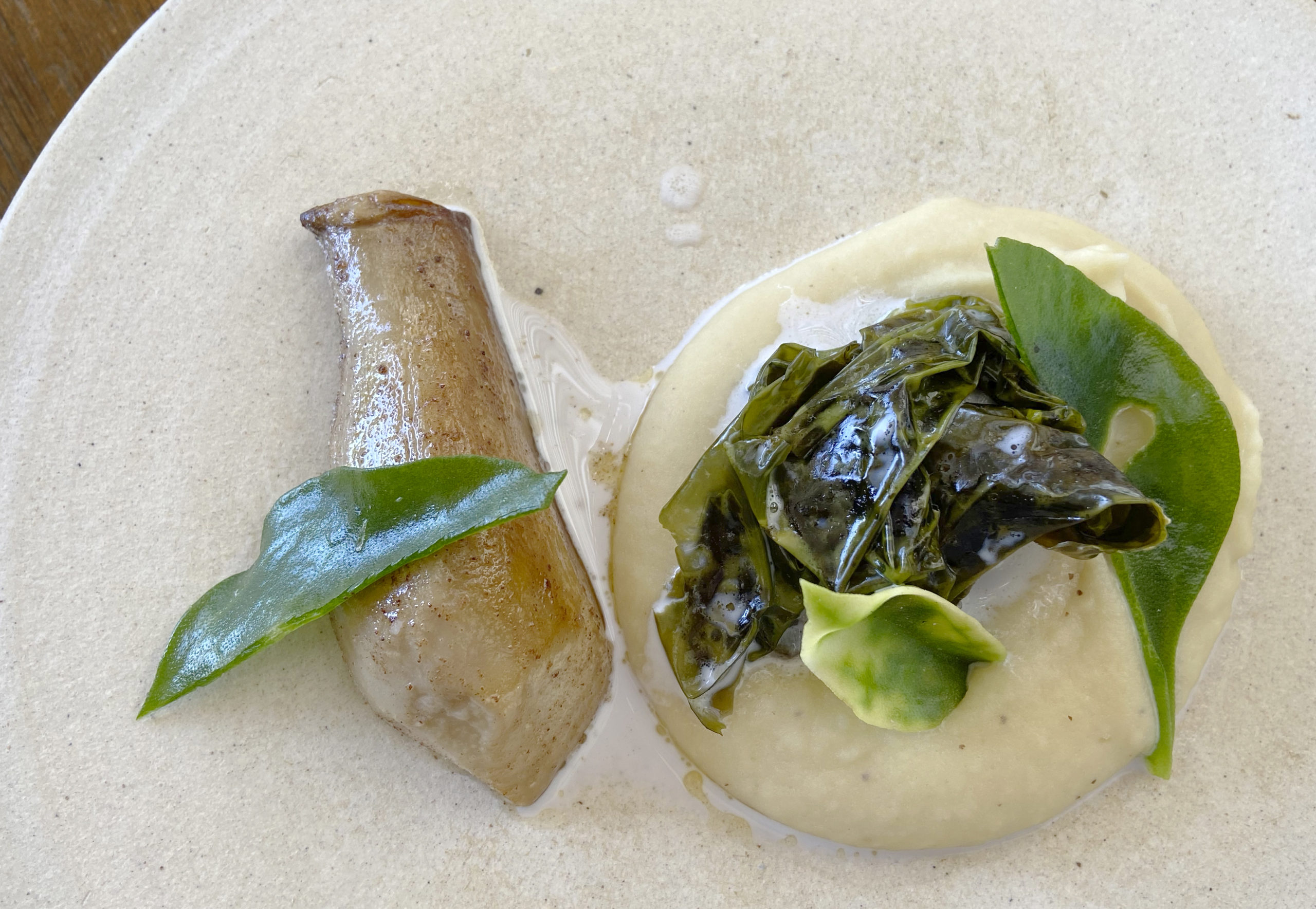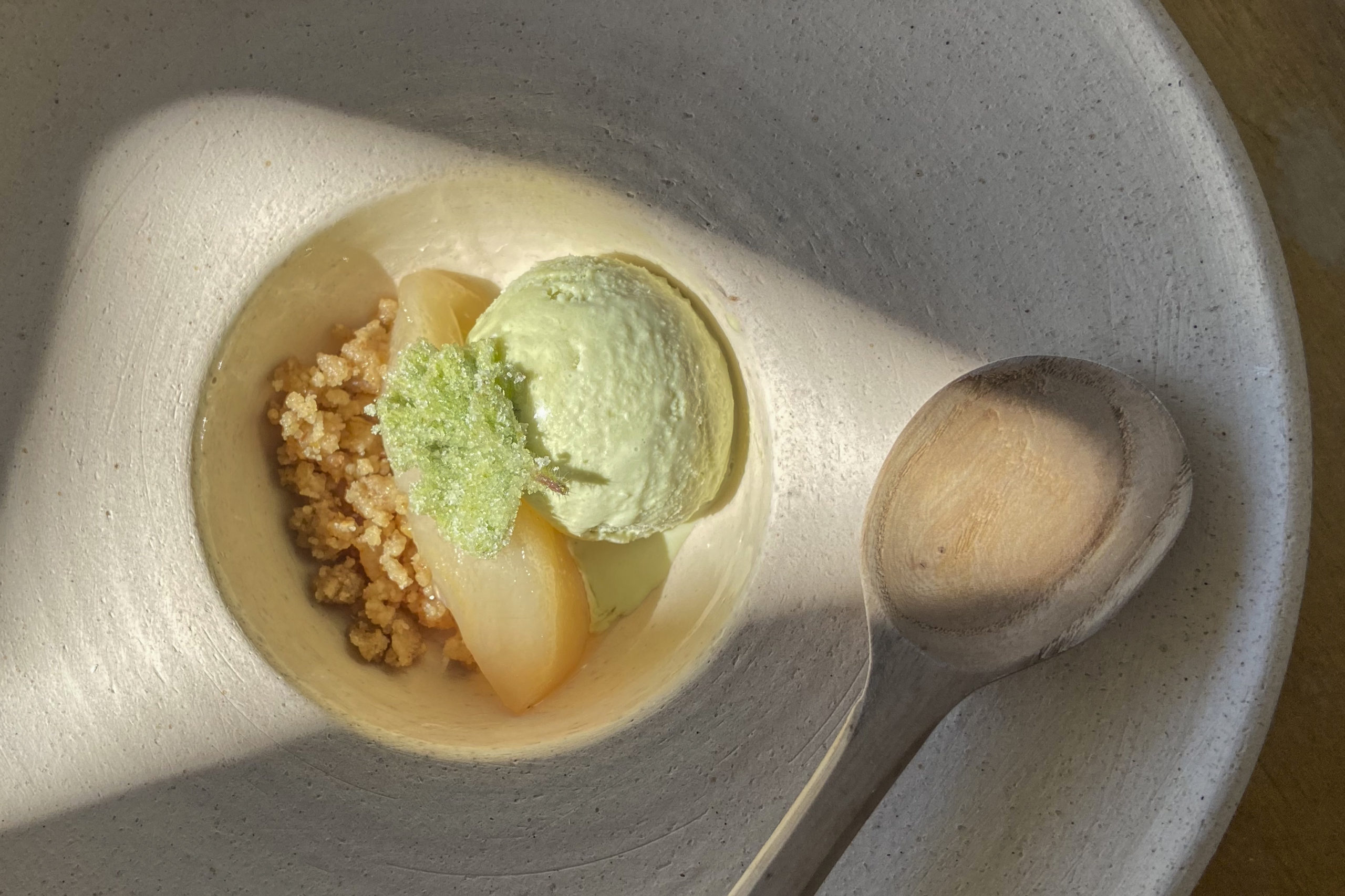BOKKOMS & HEERENBONE
A birthday lunch at Wolfgat

The indefatigable Lin Sampson gives her singular insider’s take on the food and heritage of Wolfgat in Paternoster.
It has been my cherished dream to go to the restaurant Wolfgat in Paternoster, this tiny seaside eatery that took the prize for the Best Restaurant in the World at The World Restaurant Awards in Paris in 2019.
The West Coast of Africa is part of my heart and I had a house in Churchhaven for many years after discovering the place in the Seventies and completely falling in love.
I had met Kobus van der Merwe before, some years back when he was cooking in a sort of makeshift kitchen in his mother’s quirky Paternoster shop, Oep Vir Koep, housed in an old shark-liver-oil factory. The store which has now become famous was part corner café with traditional jams, natural West Coast sea salt, veldskoene and old enamel bowls and part top tier experimental cooking. Because here was Kobus with a calmness that almost shut him down, pottering about, experimenting with wild food, leaves and plants, ancient grains, neglected secret shellfish that hid out in the pools.
“My ultimate aim was to put something unique and region-specific on the plate,” he told me then. This was food that lassoed the landscape of the West Coast and it was Kobus’ desire to convey a special sense of the place.
“I wanted to tell the story of this special place, a rocky coastline, hidden fruits, ancient remedies eaten by locals.
“The more I explored this wild food that had kept indigenous populations going for hundreds of years, the more excited I became with the tastes I never knew existed, pairing wild ingredients with cultivated.”
So when another significant birthday came my way, this was the present I wanted, to sit again next to that turbulent West Coast Atlantic ocean sea, smell the air, always mixed with the scent of flowers and coastal herbs, pungent and distinctive from any other part of South Africa.

Our table, from left to right, Lin Sampson, Herman Lategan, Jac de Villiers. (Photo: Jac de Villiers)
To travel again the white gravel roads that leave a trail of aspirin-coloured dust, and to discover what Kobus van der Merwe had originated, a place, simple but acute, a place that had enchanted the world.
The West Coast throws up so many surprises, once a place mainly for fishermen with huge boats called after their girlfriends (usually Lynette) and custom-made braais and face brick houses and men with stomachs that hung over their trousers and the Big Bunny casino.
Here was a place where you could really live off the land. It meant reliving the old days when the day had a different smell, and a soft breeze blowing in from the sea brought the smell of live fish and seaweed and that particular West Coast surge of contentment and calm.
Here the time-honoured scenes do not change: a cock crows and women in kappies walk from washing line to kitchen, hanging washing. Sometimes at Churchhaven I had a feeling that nothing could ever go wrong in the world. It was a shield, a feathered amulet against all bad fortune.
At Wolfgat the table was set on the stoep, a few yards from the sea, the rocky coast hides pools, small hidden cracks, bright sea anemones, grumpy crayfish, stalking sand sharks, tight-assed periwinkles, uptight mussels clenched to rocks and bushes with small red berries and fragrant stalks.
Spring in the strandveld is green, yellow white and orange. The warmth reveals itself slowly, the sea is calm but small white edged waves are harbinger of the Atlantic Ocean’s love of turmoil.
There is the excitement of the new season, spring brings the Bitou berries ripening, Duikerwortel flowers are starting to spark up on the dunes, the mussels are banked up on rocks with their witch-black spikes and technicolour innards. The rock pools are beginning to fill up with the new generation of sea urchins with their stonking colours, ranging from purple to firework pink. It is the time of soutslaai, dune celery and sea lettuce and, oh joy, West Coast oysters.
The air is tinged with the chlorophyll of a million green leaves. The surroundings alone bring on excitement and expectation.
We start our meal with a Wolfgat speciality, sourdough flatbread with wild sage (something I had often nibbled at when walking in the veld) and Kobus’ signature Bokkom Butter sizzling in a small pan. The idea is to tip the bread into the butter.

Saldanha Bay Oyster, heerenboontjie, Boletus mushroom, brakvygie, klipkombers. (Photo: Jac de Villiers)
His recipe requires 200g salted farm butter, one maasbanker bokkom fillet, finely chopped, with some fresh oregano, wild garlic, mint, orange buchu, sage and lemon thyme leaves, chopped up finely.
The second course is minced limpets in a large shell, with Dune Spinach temperan. On the West Coast, limpets are known as perdevoet because once cleaned and cooked they have a horseshoe shape. They have always been eaten on the West Coast, simply minced with added lemon juice, white wine and nutmeg.
A note on dune spinach, a plant I have sat amongst and know intimately but never thought of eating. Its botanical name is Tetragonia decumbens, a perennial, very hardy beach plant with young tips almost like asparagus. The woolly leaves can be eaten raw but it is less like eating your socks if they are fried briefly or blanched in boiling water, then refreshed. Also delicious wilted in olive oil, which is how I ate them when I first wrote about Kobus all those years ago.
It was the sprinkle of nutmeg that really sprung the flavour and formed a taste bubble in the mouth, combined with what all coastal life contains, that smudge of sea flavour.
The next course was sea bream, or White Hottentot, a delicate fish with no commercial value because it is too small, served with dashi, a mixture of seaweed, ginger and fish bouillon, mussels and veld greens.
And of course there had to be waterblommetjies. So often mis-cooked, these were tender as a baby’s toe. Topped with a kiesieblaar sprinkled with lemon. It looked like a geranium leaf and had a sweet, crunchy taste that lightened the dure taste of waterblommetjies.
And then a Saldanha Bay oyster, fat as a small dove, sunk into the mouth like a lover, set in a blanket of heerenbone bean puree (possibly the most delicious of all foods), it deserves a recipe…
Heerenbone bean puree
375g dried heerenbone beans
100g salted farm butter
60ml olive oil
Juice of half a lemon
1 clove fresh garlic
Large pinch of snoeksout (a medium-coarse, hand-harvested natural sea salt)
Method
Place the soaked beans in a large pot and fill with water, approximately 4 cm above the surface of the beans. Do not add salt. Bring to the boil and allow to cook until completely tender, around 30 to 40 minutes. Drain. Add the butter, olive oil, lemon juice and fresh garlic. Blend with a hand blender until pureed.
This was served with a large mushroom stalk, I think Boletus, with its tender, capacious taste, and brakvygie, that weird plant with a crystalline shine that looks as if it is plugged into an electric socket. But I loved the klipkombers. Set out neatly like matchsticks, they had a tiny, unexpected crunch and are related to the seaweed used for Japanese Nori and Welsh Laverbread.
I don’t drink alcohol, something that was made up for by the three other guests, but a few sips of a wine called El Bandito (made under the Testalonga label) had a pleasing elementary fizz. The selection of wines from small wineries up the West Coast have taken over Europe (have you noticed how the pretentious are mad about the unpretentious?), with their errant labels, one is a simple snap of a guy with his kids in a swimming pool, lack of posh, and abnormal names – Lords of Dogtown, I am The Ninja and The Sleeping Copilot (this deserves a Nobel). They have verve, torque and tone and are easy on the digestive system.
We ended with pelargonium ice cream with a pear and walnut. I was reminded that the true geranium grows in these parts in spring. It has nothing to do with the pelargonium and has a startling stop-in-your-stride redness that you can glimpse from far away.

Pelargonium capitatum ice cream, pear and walnuts. (Photo: Jac de Villiers)
I was transfixed by the wild combinations, the ingenuity and botanical knowledge, the foraging (long before it was box office or even known), the eccentric combinations and cost effectiveness of everything.
It is a learning experience which opens a new culinary lexicon. Nothing I ate had I tasted before; this can be said of few chefs. There is little written history.
The thing about much of nature, particularly marine life, is that it is so weird; strange fruit, dappled innards, eyes like chipped glass, fish the colour of a rainstorm, leaves that bleed, shells that open to mushy orange innards, spikes, curlicues, tickly fringes, and the strange dark matter of creatures that live in caves.
I studied the food as if it were a book holding completely new words.
I felt many of the dishes were still in the making and it was like taking part in a story, a theatre act, a moveable feast that would change from day to day. DM/TGIFood
Wolfgat offers a seven course tasting menu at R1,050 per person – lunch and dinner by appointment only. Optional wine pairing R850 pp.
The writer supports The Hope Exchange, a group of people who provide food for the homeless in Cape Town. Please help them here.



 Become an Insider
Become an Insider
Comments - Please login in order to comment.